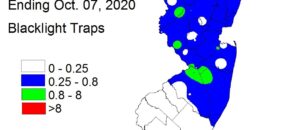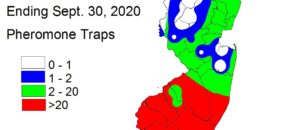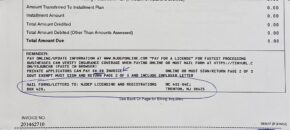Maryland Farm Bureau will be hosting a webinar on how to prepare for an H-2A employer audit. Experts from the U.S. Department of Labor, Wage and Hour Division, Maryland Department of Labor, and the private sector will be discussing what records need to be kept and produced in response to a labor investigation. Although geared […]
Continue reading...Vegetable IPM Update 10/07/20

Note: This will be the final regular edition of the Vegetable IPM Update for 2020. We will post alerts should special pest situations arise. Sweet Corn Corn earworm (CEW) moth captures continue to decline, although with temporary increases on warm nights. Growers should consider this pest to still be at moderate population levels in […]
Continue reading...Vegetable IPM Update 9/30/20 -New CEW Map

Attention: Please refer to this updated CEW pheromone map for the weekending 9/30/20. We were able to procure some late data from traps in the southwestern portion of the state. These indicate a significant influx of CEW moths on the recent storm system. At this time, these migratory individuals appear to be limited to southwestern […]
Continue reading...Tips for Renewal of NJDEP Private Pesticide Applicators Licenses

Rutgers Cooperative Extension Agricultural Agents have been receiving questions from farmers on what to do with the renewal applications they recently received from NJDEP Pesticide Control Program. The invoice may be somewhat confusing. So here are a few tips to help. 1. The $0.00 Amount Due is correct on the invoice. Farmers with a “Private” […]
Continue reading...Vegetable Disease Update – 9/30/20
Rhizoctonia root rot and leaf spots have been reported in fall transplanted strawberry. All growers are encouraged to be proactive in controlling these diseases as fall approaches. For more information on controlling important diseases in strawberry please click here. Sand blasting has been reported on a number of leafy green and other crops these past […]
Continue reading...Understanding root rots in fall-seeded and transplanted crops
Damping-off is caused by a number of important vegetable pathogens and is very common at seeding and transplanting in spring and fall. Damping-off can kill seedlings before they break the soil line (pre-emergent damping-off) or kill seedlings soon after they emerge (post-emergent damping-off) or soon after transplanting. Common pathogens that cause damping-off include Pythium, Phytophthora, […]
Continue reading...